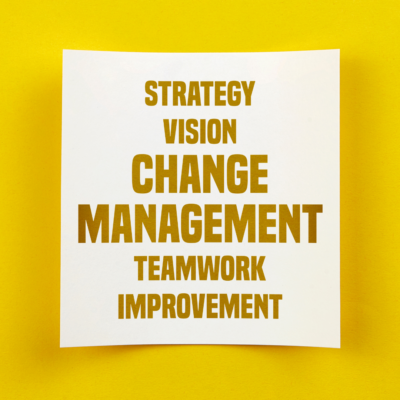How to Manage Change In the Workplace
Corporate change has been everywhere in 2023. High-profile layoffs dominated news headlines at the beginning of the year, including big names such as Twitter, Amazon, Deloitte, and more.
Despite economic uncertainty, 2023 mergers and acquisitions were plentiful, including some with multibillion-dollar price tags. Especially in IT and tech and notable companies like Warner Music Group, Penguin Random House, and Adidas all ousted their CEOs in favor of new leadership.
Organizational change comes in all shapes and sizes. Sometimes, it looks like layoffs. Other times, it might look like a merger, a reorganization, or onboarding a new company-wide technology.
Virtually every organization will, at some point, undergo a transition or change in order to remain viable and scale. And, if this year has taught us anything, it’s that having a good plan could be the difference between surviving and thriving.
Find out how to build an effective change management strategy, including how to plan for change risk and how to leverage effective communication to make that strategy go further.
Along the way, we’ll introduce you to three experts who can help you form your strategy.
Change Management By the Numbers
- 46% of CIOs report culture as being the biggest barrier to success. (Gartner)
- Only ⅓ of change initiatives succeed. (Gartner)
- 18% of employees would consider leaving their job if a big organizational change occurred. (Oak Change Report)
- 70% of employees choose their supervisors as their preferred senders of personal messages during change. (Prosci)
- 31% of CEOs are fired for not managing organizational change well enough. (Forbes)
- 47% of key employees leave a company within a year after a M&A. (EY)
- 73% of employees affected by change say they’re suffering from moderate to high-stress levels. (Gartner)
- A transformation is 5.8x more likely to be successful if the CEO communicates a compelling, high-level change story. (McKinsey)
When to Roll Out a Change Management Plan
Organizational change refers to how a company or business alters a major component of its organization. That means, not every single change demands the rollout of the full change management process; it is only essential when the potential pushback is going to be large or company-wide.
For most companies, those “bigger” changes that require a process include (to name a few):
- Roll-out of a new company-wide tool or technology
- Change in leadership
- Launching a new department or changing organizational structure
- Work culture or values update
- New HR policies or benefits
- Imposed changes (i.e. new industry regulations that affect compliance)
- Rebranding
- Merger or acquisition
- Launching a new product
- Unexpected financial crisis due to economic/socio-political problems
Generally speaking, change management processes should be reserved for significant or complex changes that significantly affect job roles and require a more strategic approach to implementation, but what’s deemed “significant” varies from company to company—and it’s directly tied to culture.
Shaping Its Activation to Company Culture
Determining when to activate the change management process is about what kind of organization you want to be and what kind of culture you’re trying to build.
Start by logging changes, no matter how small, to collect data around the range of changes your business goes through in a certain amount of time. This will help you gauge–based on the culture you’re trying to build–when it’s time to intervene and when it’s time to let things flow.
Remember that allowing an “it’s just a small insignificant change, what could possibly go wrong?” mentality to thrive at your organization can be a slippery slope, resulting in negative consequences like declined employee morale and productivity (and increased turnover).
On the other hand, employees like consistency and are generally resistant to change, meaning employers that are too trigger-happy with their processes can sometimes do more harm than good (see: change saturation) when trying to control a situation.
Building a Successful Strategy
Once you’ve determined your threshold for change that activates change management, it’s time to build your strategy.
It will look different in every organization because the size of the company and the scope of transition greatly affect how long a project lasts. Overall, these processes will be more complex and take more time at larger companies.
The process involves planning, implementation, feedback, and reevaluation. Successful processes rely on open communication and encourage collaboration at every level of the organization.
You can read the four key high-level steps involved in a quality change management program by visiting the links below:







